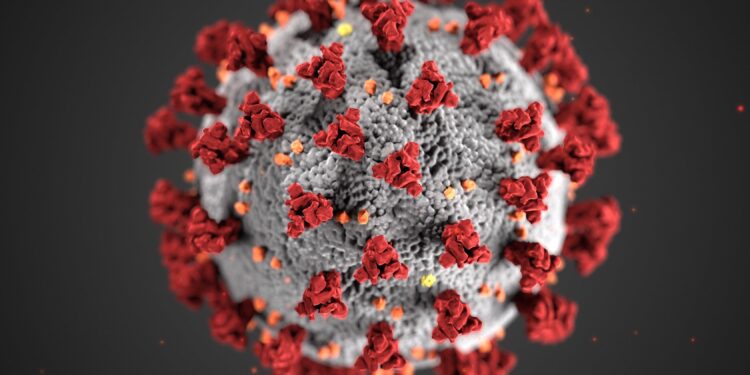Harnessing Wastewater Surveillance to Track COVID-19: Insights from Shijiazhuang
In a groundbreaking public health initiative, scientists in Shijiazhuang City, located in Hebei province, China, have adopted wastewater monitoring as an innovative method to track the spread of COVID-19. A recent publication on Taylor & Francis Online highlights how analyzing sewage samples using quantitative PCR (qPCR) and digital PCR (dPCR) technologies offers a cost-effective and timely approach to detect SARS-CoV-2 presence within communities. This pioneering research not only aids in understanding viral transmission dynamics but also equips health authorities with early warning signals for impending outbreaks, enabling swift containment measures.
The study underscores several critical benefits of wastewater surveillance in pandemic management:
- Early Virus Detection: Identifies viral circulation before clinical cases emerge or symptoms develop.
- Comprehensive Population Coverage: Captures data from symptomatic and asymptomatic individuals alike across diverse demographics.
- Efficient Resource Utilization: Minimizes reliance on mass individual testing while providing broad epidemiological insights.
| Technique | Main Use | Main Advantage |
|---|---|---|
| Quantitative PCR (qPCR) | Quantifies viral RNA levels in samples | Sensitive detection with rapid turnaround time |
| Digital PCR (dPCR) | Makes precise measurements of low-level viral loads | Differentiates minute quantities without need for standard curves |
Distinct Strengths of qPCR and dPCR Methods for SARS-CoV-2 Detection in Wastewater
The fight against COVID-19 has been bolstered by two sophisticated molecular techniques—quantitative PCR and digital PCR—that enable detailed monitoring of virus prevalence through wastewater analysis. qPCR is prized for its speed and ability to estimate the amount of virus present over time, making it ideal for tracking infection trends at the community level. Conversely, dPCR excels at detecting extremely low concentrations of viral RNA with high precision, which is essential when identifying early-stage outbreaks or residual virus presence that might evade conventional methods.
The complementary nature of these approaches enhances public health surveillance efforts by providing both breadth and depth in data collection:
- qPCR Advantages: – Rapid processing facilitates near real-time trend analysis.
– Effective quantification supports ongoing monitoring initiatives.
- dPCR Advantages: – Exceptional sensitivity detects scarce viral fragments.
– Eliminates dependency on calibration curves improving accuracy.
The integration of these methodologies was demonstrated effectively during the Shijiazhuang study where combined use yielded comprehensive insights into local epidemiology. Such robust datasets empower health officials to optimize intervention strategies, allocate resources judiciously, and ultimately enhance community protection against COVID-19 surges.
Embedding Wastewater Testing into Urban Health Infrastructure: Best Practices & Strategies
The adoption of wastewater-based epidemiology represents a transformative step toward proactive urban public health management amid ongoing infectious disease threats like COVID-19. To maximize impact when implementing such programs within city frameworks, several strategic pillars must be prioritized:
- Cohesive Partnerships: Forge strong collaborations among municipal health agencies, academic researchers, environmental experts, and laboratory facilities.
- SOP Development & Standardization: Create uniform protocols covering sample collection frequency, testing procedures, and reporting formats to ensure reliable cross-comparison over time.
- Civic Engagement: Maintain transparent communication channels with residents about findings & rationale behind subsequent interventions to build trust.
| Key Strategy Component | Description & Implementation Details |
|---|---|
| Synthesis with Clinical Data Integration |
Combining sewage surveillance results with patient case reports enriches context allowing nuanced interpretation of infection patterns across neighborhoods. |
| Epidemiological Forecasting Models |
Utilizing computational models that incorporate wastewater viral load trends helps predict outbreak trajectories, enabling preemptive healthcare system preparedness. |
| Nearing Real-Time Analytics |
Deploying automated sampling coupled with rapid molecular assays facilitates prompt detection enabling faster response times by authorities. . Conclusion: The Future Role of Wastewater Monitoring in Pandemic Preparedness and ResponseThe application of advanced molecular diagnostics such as quantitative PCR and digital PCR within wastewater surveillance frameworks has proven instrumental in mapping SARS-CoV-2 dissemination at the population level. The Shijiazhuang case exemplifies how integrating these cutting-edge tools can provide actionable intelligence that informs timely public health decisions—ultimately curbing transmission chains before they escalate into widespread outbreaks. This approach holds promise beyond COVID-19 alone. As global urban centers continue evolving their disease surveillance capabilities post-pandemic—with increasing emphasis on genomic sequencing integration—wastewater testing stands out as a scalable solution adaptable to various infectious agents including influenza viruses or emerging pathogens like monkeypox (source link here). Continued investment into refining sampling techniques alongside expanding analytical capacity will be key drivers enhancing global epidemic preparedness moving forward. Together with collaborative governance models involving scientific communities,wastewater-based epidemiology promises a resilient frontline defense mechanism capable not only of detecting but also anticipating infectious disease threats—thereby safeguarding population well-being worldwide. |














Italy to Deport Egyptian Imam After Controversial Comments at Pro-Palestine Rally